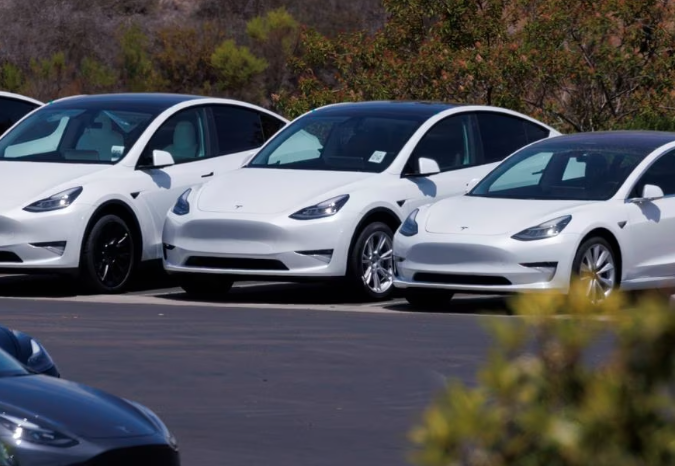The US Inflation Reduction Act has sparked concern in the EU that it could shift investments to the US, threatening EU competitiveness in burgeoning green industries. This column argues that this perceived negative impact should be re-evaluated in light of the EU’s own green funding initiatives. With strategic use of available EU funds, member states can not only neutralise the potential drawbacks of the IRA but also significantly bolster their own green sectors, leading to overall economic advancement. The effectiveness of the NextGenerationEU programme is pivotal for achieving these positive outcomes, and the expected productivity gains are inextricably linked to the successful absorption of EU funding by the member states.
The Inflation Reduction Act (IRA) of 2022, signed into law by US President Joe Biden, represents a landmark legislation in the US with the dual goals of curbing inflation and reducing the national deficit. A significant portion of the IRA is dedicated to energy security and climate change, with an allocation of $391 billion in tax provisions aimed at advancing clean energy usage and domestic energy production. The introduction of the IRA has triggered a wave of concern within the EU regarding the potential economic repercussions. The crux of these concerns revolves around the IRA’s generous tax credits and fiscal incentives that focus on renewable energy, electric vehicle incentives, home energy efficiency upgrades, and advanced manufacturing processes. Critics argue that such measures may catalyse a shift in investment and production from the EU to the US, thereby impacting the competitiveness of European industries, particularly those involved in green technology and sustainable practices.
Green funding capabilities in the EU
Prior economic analyses, such as those in Attinasi et al. (2023), suggest that the IRA’s impact on the EU’s production would be unambiguously negative and non-negligible in magnitude for affected industries in the EU. Nonetheless, these studies do not incorporate the concurrent availability of EU support measures for environmental and climate-related activities. Funds from the EU’s Multiannual Financial Framework and NextGenerationEU programme provide significant resources for climate policies, and neglecting these in impact assessments could lead to an overestimation of the IRA’s negative effects on the EU economy. The EU’s current Multiannual Financial Framework (MFF) and the NextGenerationEU package provide financing for over €2 trillion for 2021-2027. Of this amount, at least 30% will be spent to fight climate change. In fact, as also pointed out in Rusch et al. (2023), compared to available funds at the European level, the amount of IRA funding for climate policies appears rather modest.
We use the Joint Research Centre’s CORTAX multi-country, general equilibrium model to provide estimates of the potential impact of the IRA on the main macroeconomic aggregates for the green industries in the EU and the US, including the capital stock, employment and output. One distinctive advantage of CORTAX is that it models in detail the provision of the corporate income tax system and accounts for their impact on cross-border direct investment and on the economy as a whole.We consider two scenarios: one in which only the IRA is implemented in the US, and another one in which we consider the potential impact of the EU’s long-term budget and the NextGenerationEU programme whereby the EU provides financial support for climate objectives via different programmes, notably the Recovery and Resilience Facility (RRF).
The Inflation Reduction Act is integrated into the CORTAX model using inflation-adjusted estimates from the Congressional Budget Office (CBO) and the Tax Policy Center.These estimates suggest an increase in net tax expenditure of $241 billion over ten years for investment and green energy, leading to a 0.13% rise in the annual US government deficit relative to GDP by 2031. This increase is simulated as a reduction in the US corporate tax base, achieved by enhancing corporate income tax deductibilities. For the calibration of EU climate funding impact, the methodology from Pfeiffer et al. (2021) is employed, assuming that additional EU funding under the current financial frameworks will result in increased permanent factor productivity due to technological innovations.These productivity enhancements are country-specific and correlate with the exact EU funding received. The additional EU climate funds are expected to lead to higher government debt levels since they need long-term refinancing.
The impact of the IRA on EU investments
Figure 1 summarises the main effects, separately for the (entire) EU and for the US. Panel A covers the counter-factual scenario, in which the US would have unilaterally adopted the IRA energy subsidies, absent any policy reaction from the EU. Our results suggest that the IRA provisions would have indeed boosted investment in this country at the expense of investments in the EU. In this counter-factual scenario, investment in US green sectors would have increased substantially (+21.5%) thanks to the increase in the after-tax return of capital in the US vis-à-vis third countries. Given the inflow of capital, wages and output in these sectors would experience significant increases (+8.1% and +6.5%, respectively). As a result of the unilateral US policy, and not taking into account ongoing and future EU-level support programmes for green activities in the EU, business investment and output in EU green sectors would indeed fall by 2.5% and 0.5%, respectively, in the longer run. Wages in that sector of activities would decline by 1.1% driven by the fall in capital stocks.
Figure 1 The impact of the IRA on the EU green sector


Notes: The figure displays the impact of the adoption of the IRA in the US on the environmental goods and services sector (EGSS), separately for the EU and the US. In Panel (A) we do not consider the planned support for climate objectives provided through EU funding facilities under the long-term budget and the NextGenerationEU programme. In Panel (B) we assume full absorption of such funds. Source: the Joint Research Centre’s CORTAX model.
In Panel B, we consider the case in which not only the US implements the IRA but also EU member states fully access the planned support for climate objectives provided through EU funding facilities under the long-term budget and the NextGenerationEU programme. In this case, equilibrium wages (+8.0%) and employment (+5.2%) in EU green activities both respond strongly to additional funding. The capital stock increases as it partially complements higher employment levels (+3.7%). As production, read GDP, is a function of capital and labour, it rises strongly (+12.0%) for the EU’s environmental goods and services sectors. At the same time, the effect would be slightly smaller in the US than under a unilateral adoption (Panel A), albeit still strongly positive.
Key takeaways
Our analysis suggests that under a unilateral adoption of IRA provisions, the boost to investment in the US would be indeed detrimental to green investments in the EU. However, in practice, the use of EU funding facilities for supporting EU green sectors significantly increases investment in the EU, even in the case of the IRA adoption. As a result, the capital stock and production level of the EU green sectors would experience significant rises, leading to pronounced increases in wages and employment in these activities. The expected positive effect of the IRA in the US would be slightly smaller compared to the scenario where the US would implement such reform unilaterally and without considering the EU funding in support of climate objectives. Our analysis therefore suggests that the impact of IRA on the EU economy and, in particular, on its attractiveness for green investments should be largely mitigated by the availability of the NextGenerationEU and other related programmes, resulting in a positive net impact for the EU’s green sectors and the EU economy as whole.
However, the degree of implementation of the NextGenerationEU programme remains a key aspect for this positive outcome to materialise, since the expected productivity impact depends directly on the country-specific absorption of EU funding facilities. In fact, the magnitude of the results for the EU would be considerably smaller when taking into account that countries typically do not fully absorb the available EU funding.
Source : VOXeu





